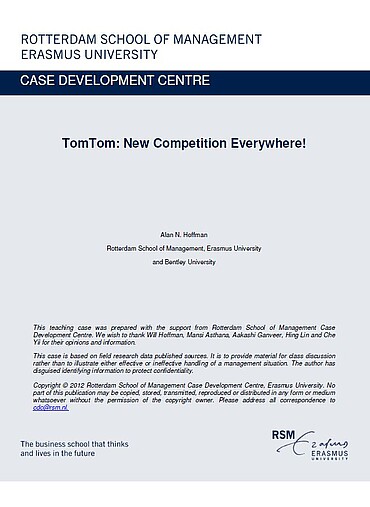Citation Note
Based on published sources; 24 pages.
Follow the 'handle' link to access the Case Study on RePub.
For EUR staff members: the Teaching Note is available on request, you can contact us at rsm.nl/cdc/contact/
For external users: follow the link to purchase the Case Study and the Teaching Note.
description
Facing a saturated US & European personal navigation device market with increasing competition from other GPS providers, TomTom began to shift its business mix toward value-added services and make personal navigation devices a smaller portion of total revenue.
Abstract
TomTom, an Amsterdam-based company that provides navigation services and devices, leads the navigation systems market in Europe and is second in the US. Its most popular products include TomTom Go and TomTom One for cars, TomTom Rider for bikes, TomTom Navigator (digital maps), and TomTom for iPhone – its most recent release. The company attributes its market leadership to its technology, large customer base, distribution power, and prominent brand image. But as the US and European personal navigation device market becomes saturated, TomTom’s sales growth rate declines. The company also faces increasing competition from other platforms using GPS technology like cell phones and smartphones with built-in navigation functions. Legal and environmental restrictions on the digital navigation industry make TomTom’s future even more uncertain. TomTom responded to these threats by shifting its business mix toward value-added services, making its personal navigation devices a smaller portion of total revenue. Whether the company can recapture significant growth may well depend on whether this shift will succeed.
usage
This case is written in a way that complex strategic decisions can easily be analyzed during limited classroom discussion time. Professors have commented that the case has worked well in their classrooms.
